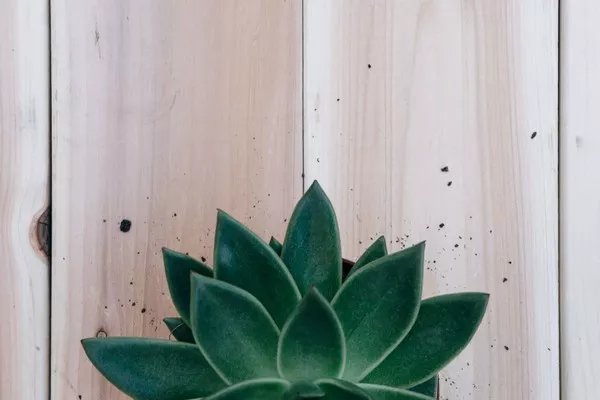Succulent cuttings have become increasingly popular among plant enthusiasts for their ease of propagation and the stunning variety of plants that can be grown from them. Whether you’re a seasoned gardener or a novice plant parent, learning how to use succulent cuttings can open up a world of possibilities for creating lush, vibrant gardens or enhancing your indoor plant collection.
Understanding Succulent Cuttings
Succulent cuttings are segments of succulent plants that are carefully removed and encouraged to grow roots, eventually developing into independent plants. This method of propagation is favored for its simplicity and high success rate, making it an ideal option for both beginners and experienced gardeners. The key to successful succulent propagation lies in understanding the anatomy of these plants.
To start using succulent cuttings, it’s crucial to choose healthy parent plants. Look for well-established succulents with plump, firm leaves. The best time to take succulent cuttings is during the growing season, typically spring or early summer, when the plants are actively growing and more responsive to root development.
Preparing Succulent Cuttings
Once you’ve selected the succulent you want to propagate, the next step is to prepare the cuttings. Using a clean, sharp knife or scissors, carefully snip a segment of the plant, ensuring it is at least two inches long. Be mindful of the type of succulent you are working with, as some varieties, like echeverias, can be propagated from individual leaves, while others, like sedums, are best propagated from stem cuttings.
After obtaining the cuttings, allow them to air dry for a day or two. This step helps to form a callus on the cut end, reducing the risk of rot when the cutting is planted. The callusing process is especially important for succulents that have a higher water content in their leaves.
Planting Succulent Cuttings
With your succulent cuttings prepared, it’s time to plant them and encourage root development. Choose a well-draining potting mix suitable for succulents and cacti. Fill a shallow container or tray with the soil mix, ensuring it is moist but not waterlogged.
Gently insert the cut end of the succulent cutting into the soil, burying it deep enough to provide stability. Consider using rooting hormone to enhance root development, especially for more challenging succulent varieties. Water sparingly, allowing the soil to dry out between watering sessions to prevent overwatering, a common issue with succulents.
Caring for Succulent Cuttings
Proper care is essential for the success of your succulent cuttings. Place the planted cuttings in a location with bright, indirect light. Avoid exposing them to direct sunlight, as this can lead to sunburn and stress. Gradually acclimate the cuttings to sunlight over a few weeks as they establish roots and adapt to their new environment.
Maintain a consistent watering schedule, allowing the soil to dry out between watering sessions. Overwatering is a common mistake that can lead to root rot, so err on the side of underwatering rather than overwatering. Once the succulent cuttings have established roots and are showing signs of new growth, you can gradually transition to a standard succulent care routine.
Creative Uses for Succulent Cuttings
Succulent cuttings offer endless possibilities for creative and decorative arrangements. Beyond traditional potting, consider exploring unique ways to showcase your succulent cuttings. Create a stunning succulent wreath by arranging cuttings in a circular form and securing them with floral wire. Alternatively, plant succulent cuttings in shallow containers, such as vintage tea cups or driftwood, for a whimsical touch.
Vertical gardens are another innovative way to display succulent cuttings. Use a vertical planter or repurpose an old pallet to create a living wall of cascading succulents. This not only adds a striking visual element to your space but also maximizes the use of vertical surfaces.
Troubleshooting Common Issues
While succulent cuttings are generally easy to propagate, certain challenges may arise. Recognizing and addressing common issues is crucial to ensuring the success of your succulent propagation efforts.
One common problem is rot, which can occur if the cuttings are planted in overly moist or poorly draining soil. To prevent rot, adjust your watering habits and ensure the soil is well-draining. If rot is detected, trim the affected area and allow the cutting to callus before replanting.
Pests, such as mealybugs and aphids, can also pose a threat to succulent cuttings. Regularly inspect your plants for signs of infestation and treat them promptly with natural remedies or insecticidal soap.
Conclusion
In conclusion, succulent cuttings provide an exciting and accessible way to expand your succulent collection and enhance your gardening skills. By understanding the basics of succulent anatomy, preparing and planting cuttings with care, and exploring creative display options, you can enjoy the beauty of these resilient plants in various forms.
Whether you’re a novice looking to embark on your first succulent propagation journey or an experienced gardener seeking new challenges, succulent cuttings offer a world of possibilities. With patience, proper care, and a touch of creativity, you can unlock the full potential of succulent cuttings and cultivate a vibrant and thriving succulent garden.


